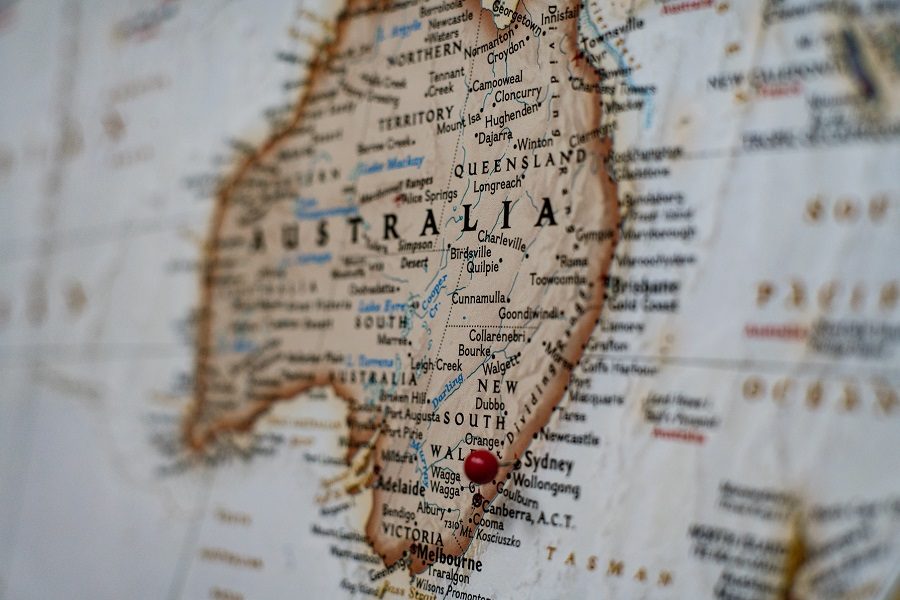
The Australian government has released its national blockchain roadmap, one that aims to revolutionize the country’s blockchain industry. The roadmap talks about the opportunities that blockchain technology could unleash across sectors from supply chains and logistics to agriculture, with finance and banking being priority sectors.
The national blockchain roadmap read,
“Blockchain technology is predicted to generate an annual business value of over US$175 billion by 2025 and in excess of US$3 trillion by 2030. The Australian Government is proactively addressing challenges and leveraging opportunities across a range of sectors to make this a reality.”
The country’s Ministry for Industry, Science and Technology and Ministry for Trade, Tourism and Investment had announced a national blockchain strategy and roadmap way back in March 2019. The latest roadmap is a product of a year’s worth of preparation and consultation.
Karen Andrews, Minister for Industry, Science and Technology, commented on the strategy and noted that the five-year blockchain roadmap would underpin the work of regulators, startups, and researchers on the matter, according to a report.
Andrews also said that the sector is set to be worth AU$259.4 billion ($175 billion) and that governments and private industries could all stand to benefit from embracing blockchain technology. She added,
“I think what’s really exciting is the potential for blockchain to strengthen export opportunities, helping Aussie producers and manufacturers track their goods, which are in demand around the world because of our clean, green reputation(…) Blockchain technology offers great potential to save money, initiate new business and export opportunities, boost economic growth and create new jobs.”
Nicholas Giurietto, CEO of Blockchain Australia, an association representing Australian business engaged in the blockchain space, was one of many to comment on the roadmap. He said,
“All 12 of the key recommendations of the Roadmap are important but the standout recommendation is to establish a model for collaboration between industry, academia, and government on progressing key blockchain use cases.”
The roadmap chalks out a total of 12 recommendations for a “blockchain-empowered future,”
- Formalize the National Blockchain Roadmap Advisory Committee and rename it the National Blockchain Roadmap Steering Committee
- Establish a collaborative model comprising working groups of industry, the research sector, and government to progress analysis on the next use cases, with each providing equal funding contribution.
- Investigate options for progressing the three use cases in the Roadmap, including completing a full economic analysis of Agricultural wine exports and credentialing and investigating a possible pilot project on Know Your Customer (KYC) checks.
- Government to establish and coordinate a group of government blockchain users, with State and Territory government representatives invited to join, to discuss the learnings from existing government use cases, promote and diffuse these learnings across government, and identify further government use cases.
- Look internationally to identify examples of countries using blockchain to provide efficient government services, for example, Estonia, for learnings for Australia.
- Work closely with blockchain providers to engage with the Business Research and Innovation Initiative (BRII) program and have a specific challenge in one of the use case areas we know blockchain can provide good solutions
- Ensure that blockchain is included in broader policy work to increase management capability around digital technologies.
- Industry and educational institutions work together to develop common frameworks and course content for blockchain qualifications.
- Work with Austrade on a capability development program for Australian blockchain start-ups so that they are ready to expand globally and link qualified companies to Austrade supported programs such as Landing Pads.
- Work with Austrade to deliver a blockchain focussed inbound investment program introducing potential investors to Australia with a view to achieving outcomes that grow and bring the capability to the Australian blockchain ecosystem.
- Leverage existing bilateral agreements to consider pilot projects or collaborations incorporating blockchain technology with other countries.
- Work with relevant government departments to ensure Australian businesses can connect into emerging digital trade infrastructure being developed.
This isn’t the first time Australia is in the news for its blockchain and crypto policy this year, however. Just a few weeks ago, the Australian Prudential Regulation Authority had made a submission before the Senate Select Committee on Financial and Regulatory Technology, stating that it could potentially oversee Facebook’s Libra under a proposed framework to govern digital wallets. This development emerged just weeks after the country’s RBA had refused permission to let Libra operate on its shores.
The post appeared first on AMBCrypto






